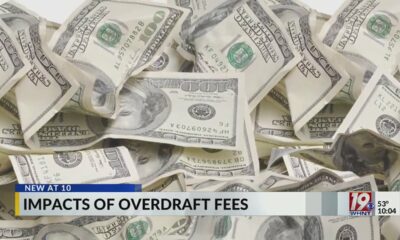
Mitchell Leff via Getty Images
Eric Zillmer, Drexel University
The Super Bowl is one of the world’s most significant single-day sporting events.
It attracts over 100 million U.S. viewers and [tens of millions of international viewers], making it an entertainment phenomenon. For Eagles fans who are not making the trip to the Superdome in New Orleans, there will be plenty of places to watch in Philadelphia – including rowdy bars, living rooms and even home tailgates, all while the city is lit in Eagles green.
For me, the Super Bowl is a real-life laboratory. As a sports scientist, neuropsychology professor and the former athletic director at Drexel University in Philadelphia, I investigate how high-performance athletes prepare cognitively and psychologically for a winning performance on game day.
When the stakes are at their highest, what can psychology reveal about who is mentally prepared to win the Super Bowl?
Tough-minded and open to experience
Research suggests that super-elite athletes are tough-minded and not easily rattled.
Their psychological profiles look similar to those of high-performance solo classical guitarists or fighter pilots. On personality tests, athletes typically score at least average in extroversion, openness and agreeableness, and high in conscientiousness.
Professional athletes work incredibly hard and are disciplined, well organized, goal-oriented, reliable and generally sociable.
A new focus in personality research in competitive athletes is on creativity and, specifically, being open to experience, which includes being receptive to new ideas and being flexible.
Openness has become increasingly important in the modern blueprint for winning football games. Daniel Memmert, a sports scientist at German Sport University Cologne, calls this “tactical creativity.” It is a cognitive style that allows one to be imaginative and engage in divergent thinking – which is an ability to think flexibly outside of routines and devise multiple solutions – even in real-time competitive situations.
Divergent thinking in high-performance sports includes focusing on the task at hand and paying attention to relevant information while ignoring irrelevant information in the athletic arena. The creative athlete knows when and where to look in order to win a play or avoid a costly error.
Creative and cool under pressure
Creativity is essential in unscripted football plays – when a planned play has not been executed properly, like a fumble or an interception.
Intentionally distracting your opponent has become an important part of sports competition. It is why quarterbacks often change the play at the line of scrimmage. But it becomes even more critical during improvised offensive plays when everything is unscripted. In a sport where milliseconds matter, being creative and engaging in something your opponent doesn’t expect can be the difference between winning and losing.
When the Eagles won the Super Bowl in 2018, backup quarterback Nick Foles calmly executed a trick play on fourth-and-goal, becoming the first player in history to both throw and catch a touchdown pass in a Super Bowl. The play is now called the Philly Special.
To engage in tactical creativity, however, an athlete must be relaxed. That’s not easy when millions of people are watching your every move.

Jim Davis/The Boston Globe via Getty Images
Brain connectivity at its finest
Performance anxiety is a leading cause of poor athletic performance. Research suggests an athlete’s competitive anxiety can be cumulative and maybe even be contagious, affecting teammates negatively.
That makes the Super Bowl as much a battle of nerves as it is about the physical execution of plays. So, how do professional athletes do it? The athlete practices how to think as much as they practice to play. Training is intentionally hard and uncomfortable to assist with preparing the body and mind.
Since emotions and thoughts affect behavior and performance, the concept of emotional self-regulation – or intentionally focusing on the present moment – has been introduced into competitive sports. Mindfulness, meditation, yoga, breathing exercises and grounding techniques are now integral to the toolkit for high-performance sports.
For athletes, it is relatively easy to elevate their emotions to push the ball forward with a play like the Philadelphia brotherly shove – an almost unstoppable offensive play used by the Eagles in which the team pushes the quarterback through the opponent’s defense for a short gain when needed.
But calming those emotions to execute a synchronized, attacking, complex passing play is more challenging cognitively.
A successful football player must easily transition from being highly aroused to remaining composed on command within seconds.
This cognitive efficiency and fluidity requires many hours to master. I am fully aware that while watching the Eagles’ Jalen Hurts, I am not just observing a great, innovative quarterback; I am witnessing brain connectivity at its finest.

Corey Perrine via Getty Images
Psychology of Eagles fans
How fans experience Super Bowl Sunday is entirely different, psychologically speaking, from the players.
To perform at the highest level, the players are process oriented. They attempt to be present in real time and play without fear. On game day, it is advantageous for the competitor to play like a kid, full of joy and confidence.
Fans, on the other hand, are results oriented. And they are nervous wrecks, like parents watching their kids compete.
One remedy for managing this stress is watching the game with other fans. Philadelphians represent diverse socioeconomic and ethnic groups that often unite through sports. These social connections – which Germans, who were among the first settlers in the city, call Gemeinschaftsgefühl – are a hallmark of good psychological health.
I know I will never forget when the Eagles won Super Bowl LII: the game, the season and the parade.
And new research indicates why.
According to University of California, Berkeley psychology professor Dacher Keltner, these authentic “awe” moments are shortcuts to happiness. Football fans might experience awe when a seemingly unpredictable interception or touchdown has significant consequences.
In other words, the thrill of the game and the excitement of winning not only unite fans, but they can also transform them into happier versions of themselves.![]()
Eric Zillmer, Professor of Neuropsychology, Drexel University
This article is republished from The Conversation under a Creative Commons license. Read the original article.





















































